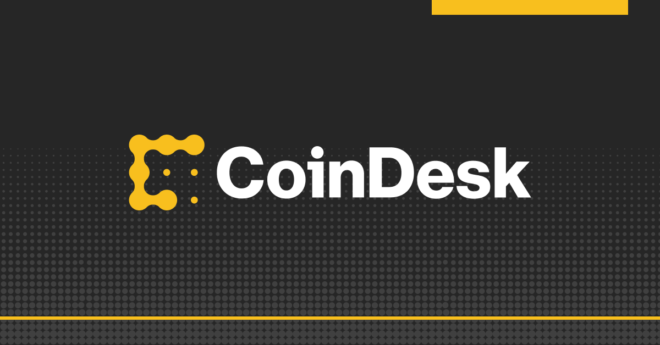Ethereum is a blockchain-based software platform that can be used for sending and receiving value globally via its native cryptocurrency, ether, without any third-party interference. But it can also do much more than that.
First proposed in 2013 by Russian-Canadian programmer Vitalik Buterin, Ethereum was designed to expand the utility of cryptocurrencies by allowing developers to create their own special applications. Unlike traditional apps, these Ethereum-based applications, called “decentralized applications”, are self-executing thanks to the use of smart contracts.
Smart contracts are code-based programs that are stored on the Ethereum blockchain and automatically carry out certain functions when predetermined conditions are met. This can be anything from sending a transaction when a certain event takes place, or loaning funds once collateral is deposited into a designated wallet. These smart contracts form the basis of all decentralized applications (dapps) built on Ethereum, as well as all other dapps created across other blockchain platforms.
What are ether and gas?
Ether (ETH) is the main token of the Ethereum blockchain and acts as the primary “fuel” that powers all activity on it. “Gas” refers to an amount of ether that’s needed to perform a certain function on the network, such as:
- Sending transactions (swapping, trading or moving Ethereum-based tokens around)
- Interacting with decentralized applications
- Creating smart contracts
- Minting non-fungible tokens, or NFTs
How much gas you pay for each action on the Ethereum blockchain is calculated based on two things:
- Gas cost: The computational energy an operation on Ethereum requires to be processed and executed on the network. This is denominated in units of gas.
- Gas price: The rate set by the user for converting gas into units of ether. These units are usually denominated in “gwei,” which is a unit of Ethereum equivalent to 0.000000001 ether.
Cost of an operation on Ethereum = Gas cost x Gas price
How Ethereum works
Like Bitcoin, Ethereum has its own blockchain where a global network of over 2.4 million computers known as “nodes” maintains a record of transactions. Anyone can run an Ethereum node and participate in validating the network provided they have the right hardware, knowledge and time to commit to it.
There are three main types of nodes that operate on the Ethereum network.
- Full nodes: These copy and verify all transactions on the Ethereum blockchain, as well as execute smart contract instructions known as opcodes. Full nodes should not be confused with miners (see example below)
- Light nodes: These only maintain a partial record of the blockchain and request the rest of the data from full nodes. As the name suggests, these nodes can run on lighter devices such as mobile phones and do not need to operate 24/7.
- Full archive nodes: These store the entire history of the Ethereum blockchain including previous states and are used for tools like block explorers.
An easy way to understand the difference between miners and full nodes is to think of miners as archaeologists out in the field uncovering historical artifacts and full nodes as administrators at a national museum that maintain a record of all their findings.
The main difference between a full node and a full archive node is that a full archive node does everything a full node does but also compiles an archive of all previous states.
The Ethereum blockchain relies on miners to discover new blocks. These are like digital boxes that store transaction information and other data. Miners compete using specialized computing equipment to win the chance to be the next person to add a block to the chain and get rewarded with transaction fees (from the transactions they add to the block) and “block rewards.” Block rewards are new ether coins that are created when each new block is discovered and are given to the successful miner for their efforts. Once a block is added, the rest of the mining network verifies it to make sure the balances are correct and the transaction isn’t a double-spend, i.e. someone isn’t trying to spend money they don’t have. Full nodes then make a record of the final data.
However, unlike Bitcoin, Ethereum full nodes also need to keep track of the “state” – or the current information – of all of these applications, including each user’s balance, all the smart contract code, where it’s all stored, and any changes that are made. This means running an Ethereum node requires significantly more storage and is expensive to run compared to a bitcoin node.
Here’s a summary of what’s stored in each node:
- Accounts: This shows how much ether the user has.
- Smart contract code: Ethereum stores smart contracts, which describe the rules that need to be met for money to be unlocked and transferred.
- Smart contract state: The state of the smart contracts.
Smart contracts
Smart contracts can be written using several high-level programming languages such as C++ and JavaScript, but the most popular is called “Solidity,” created by Ethereum’s former Chief Technical Officer Gavin Wood.
These contracts then have to be converted from high-level languages (that humans can understand) to low-level languages (that a machine can understand.) That’s because a computer environment called the Ethereum Virtual Machine (EVM) is where all smart contracts are deployed and executed. This EVM is built into every full Ethereum node and can carry out over 140 different operation codes (opcodes). These are essentially machine instructions that can be strung together to perform virtually any task, which is what the term “Turing-complete” refers to.
The advent of smart contracts has led to the creation of decentralized autonomous organizations (DAOs) and an entire decentralized finance ecosystem, or “DeFi,” where traditional financial services such as lending, loans and insurance can now be accessed through peer-to-peer powered DApps.
Ethereum token standards
Ethereum token standards are the blueprints for creating tokens that are compatible with the broader Ethereum network. These include tokens that can be traded for one another (fungible) as well as tokens that are inherently unique and cannot be mutually exchanged (non-fungible tokens, aka NFTs). Ethereum token standards were invented by Ethereum developersto help users create new digital currencies easier, faster and cheaper than starting from scratch.
While there are several different ERC token standards deployed on the ethereum network, three are commonly used:
- ERC-20: For creating fungible tokens that have similar properties to bitcoin and other mainstream cryptocurrencies
- ERC-721: For creating non-fungible, unique tokens such as NFTs
- ERC-1155: A multi-token standard used for creating fungible, non-fungible and semi-fungible tokens.
Ethereum 2.0
Ethereum 2.0, also known as “Serenity,” is a major upgrade that aims to make the world’s second-largest crypto project faster, more efficient and more scalable by migrating the network from a Proof-of-Work to a Proof-of-Stake system.
Dubbed “Casper,” Ethereum’s new Proof-of-Stake (PoS) system involves users of the network locking up their coins to become network contributors, as opposed to using expensive, energy-intensive mining equipment. Each staker is required to lock up 32 ether or join a staking pool and combine their ether with others to participate in creating new blocks on the Ethereum PoS blockchain. The Ethereum 2.0 upgrade is rolling out in multiple phases. The initial ones include:
- Phase 0: Beacon chain and Proof-of-Stake launch
- Phase 1: Merging the old and new Ethereum blockchains
- Phase 2: Introduction of “shard” chains and roll-up technology
- Phase 3: Security improvements.
Phase 0 launched in December 2020 and the Beacon is a separate Ethereum blockchain that introduced a Proof-of-Stake system. It’s also responsible for new block creation, transaction verification, staking rewards and managing new Ethereum blockchains called “shard chains.”
In the next major phase of development, Ethereum’s Beacon chain will be bridged to the main Ethereum network and will replace the current, energy-intensive Proof-of-Work system with Proof-of-Stake. Network stakeholders known as “validators” will begin producing blocks, verifying transactions and managing the security of the blockchain in place of miners after Ethereum and Eth 2.0 are merged.
After the merge, there will be additional, smaller upgrades needed. The next task for Ethereum developers will be enabling sharding, which creates multiple mini-blockchains. Each shard will be responsible for verifying its own set of transactions rather than the entire network verifying every single transaction. The Beacon chain will act as the main coordinator between these shards, randomly assigning validators to each.
With PoS and sharding both enabled, Ethereum developers anticipate making further tweaks to enhance the security of the network. This includes adding anonymity features to mask validator identities behind block proposals. It also includes leveraging new technologies such as the Verifiable Delay Function (VDF) to further secure the randomness of validator assignments and make it harder for malicious actors to disrupt the network.




